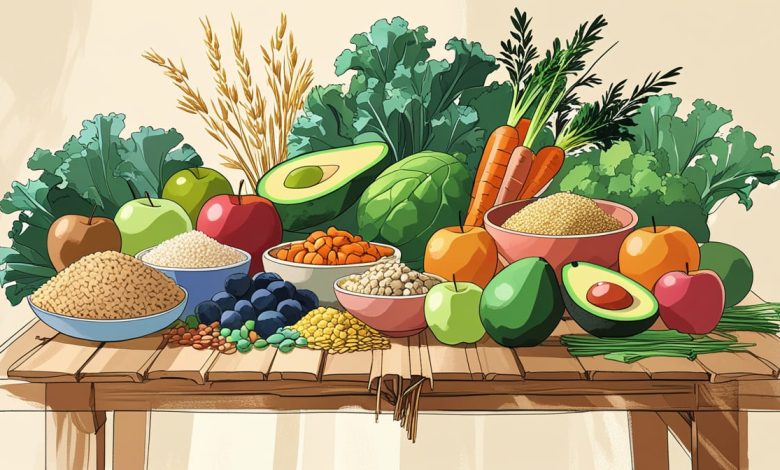
Maintaining a balanced diet is key to living a healthy lifestyle. When you have the right foods in your pantry and fridge, healthy eating becomes easy and affordable. Whether you’re a busy professional, a parent, or just someone looking to fuel your body with nutritious foods, stocking up on the following 15 essential staple foods will ensure you eat healthy every day of the week.
Why Staple Foods Are the Key to Healthy Eating
Staple foods are the foundation of a well-stocked kitchen. They’re versatile, affordable, and nutrient-dense, making it easy to whip up healthy meals even on your busiest days. By keeping these essentials on hand, you’ll save time, money, and energy while staying on track with your health goals.
1. Quinoa
Why It’s a Staple:
Quinoa is a complete protein, meaning it contains all nine essential amino acids. It’s also gluten-free, high in fiber, and incredibly versatile.
How to Use It:
- Use it as a base for grain bowls.
- Add it to soups or salads for extra protein.
For a delicious quinoa recipe, try our Easy Quinoa Salad.
To learn more about the benefits of quinoa, check out this article from the Harvard T.H. Chan School of Public Health.
2. Oats
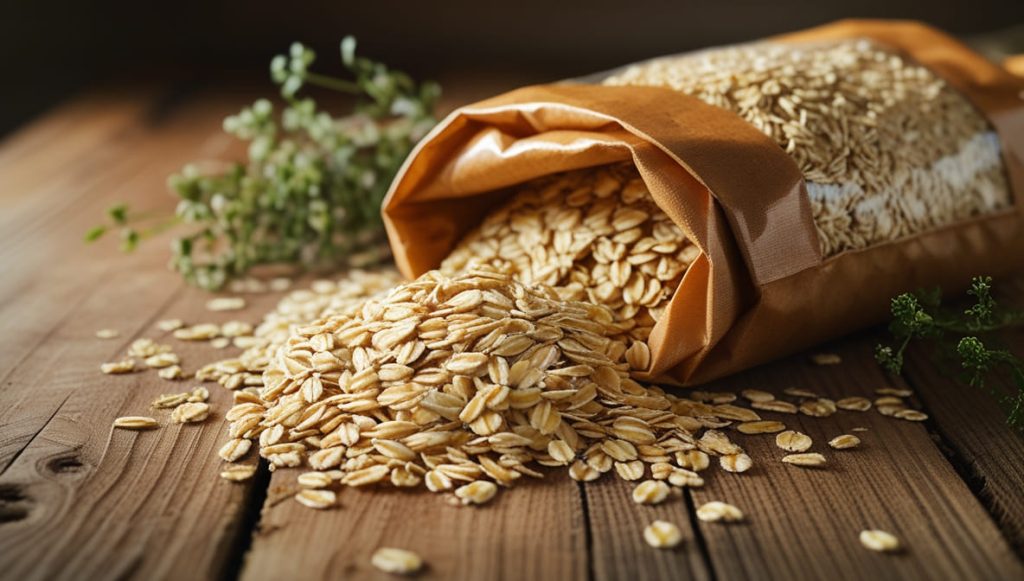
Why It’s a Staple:
Oats are rich in fiber, which helps keep you full and supports digestion. They’re also a great source of complex carbs for sustained energy.
How to Use It:
- Make overnight oats for a quick breakfast.
- Use oats in baking for healthier muffins or cookies.
Discover the health benefits of oats in this guide from Healthline.
3. Frozen Berries

Why It’s a Staple:
Frozen berries are just as nutritious as fresh ones and are perfect for smoothies, oatmeal, or desserts.
How to Use It:
- Blend into smoothies.
- Top your yogurt or oatmeal with a handful.
4. Leafy Greens (Spinach, Kale, etc.)
Why It’s a Staple:
Leafy greens are packed with vitamins, minerals, and antioxidants. They’re low in calories but high in nutrients.
How to Use It:
- Add to smoothies for a nutrient boost.
- Sauté as a side dish or mix into pasta dishes.
Try our recipe for Kale and Quinoa Salad for a quick and healthy meal.
5. Sweet Potatoes
Why It’s a Staple:
Sweet potatoes are rich in vitamin A, fiber, and complex carbs. They’re a healthier alternative to regular potatoes.
How to Use It:
- Roast them as a side dish.
- Mash them for a creamy, nutrient-packed topping.
Learn about the nutritional benefits of sweet potatoes in this article from Medical News Today.
6. Canned Beans (Black Beans, Chickpeas, etc.)
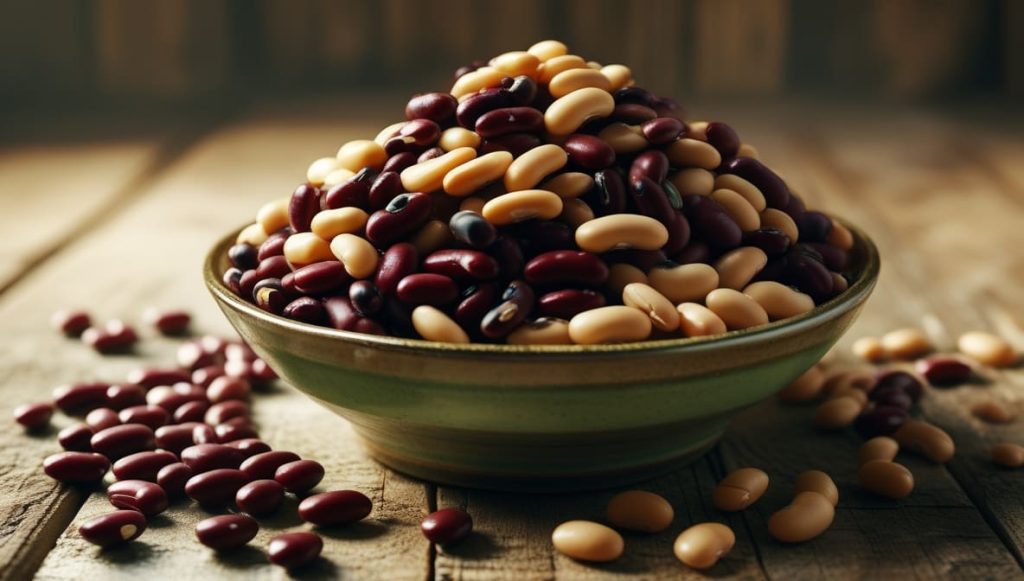
Why It’s a Staple:
Beans are an excellent source of plant-based protein and fiber. They’re also affordable and shelf-stable.
How to Use It:
- Add to salads, soups, or tacos.
- Make homemade hummus with chickpeas.
For a hearty meal, try our recipe for Spicy Black Bean Soup.
7. Greek Yogurt

Why It’s a Staple:
Greek yogurt is high in protein and probiotics, which support gut health.
How to Use It:
- Use as a base for parfaits or smoothie bowls.
- Substitute for sour cream in recipes.
Read about the benefits of Greek yogurt in this article from WebMD.
8. Eggs

Why It’s a Staple:
Eggs are a complete protein and contain essential nutrients like choline and vitamin D.
How to Use It:
- Make scrambled eggs or omelets for breakfast.
- Hard-boil for a quick snack or salad topping.
9. Whole Grain Bread
Why It’s a Staple:
Whole grain bread is high in fiber and provides long-lasting energy.
How to Use It:
- Use for sandwiches or avocado toast.
- Make healthy French toast for breakfast.
10. Nuts and Seeds (Almonds, Chia Seeds, etc.)

Why It’s a Staple:
Nuts and seeds are rich in healthy fats, protein, and essential minerals.
How to Use It:
- Sprinkle on oatmeal or yogurt.
- Use as a topping for salads or baked goods.
Discover the benefits of chia seeds in this article from Medical News Today.
11. Frozen Vegetables

Why It’s a Staple:
Frozen vegetables are just as nutritious as fresh ones and are perfect for quick meals.
How to Use It:
- Add to stir-fries or soups.
- Steam as a quick side dish.
12. Canned Tomatoes
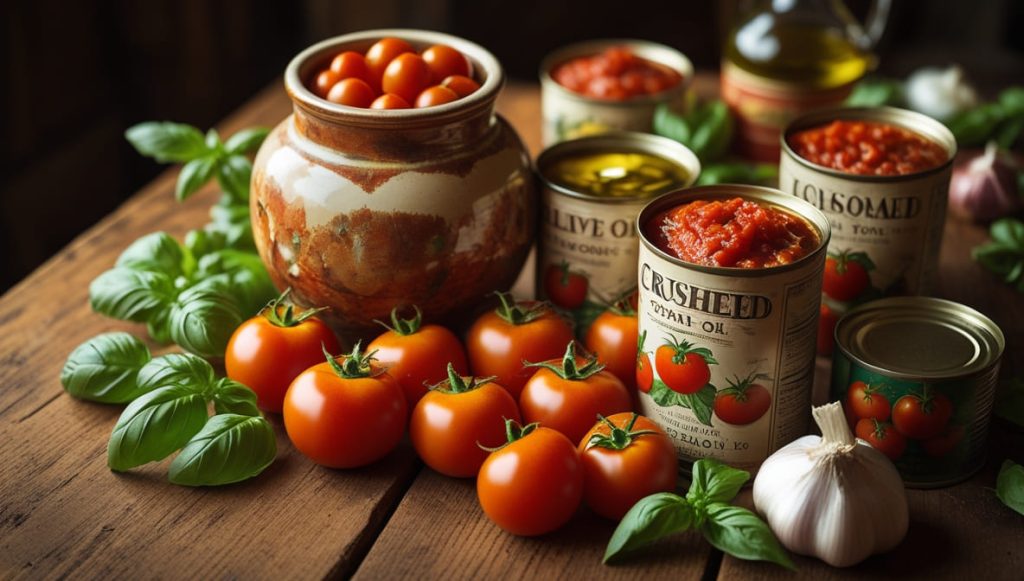
Why It’s a Staple:
Canned tomatoes are a versatile base for sauces, soups, and stews.
How to Use It:
- Make homemade pasta sauce.
- Use in chili or curry recipes.
13. Olive Oil
Why It’s a Staple:
Olive oil is rich in heart-healthy monounsaturated fats and antioxidants.
How to Use It:
- Use for sautéing or roasting vegetables.
- Drizzle over salads or cooked dishes.
Learn about the health benefits of olive oil in this article from Healthline.
14. Garlic and Onions
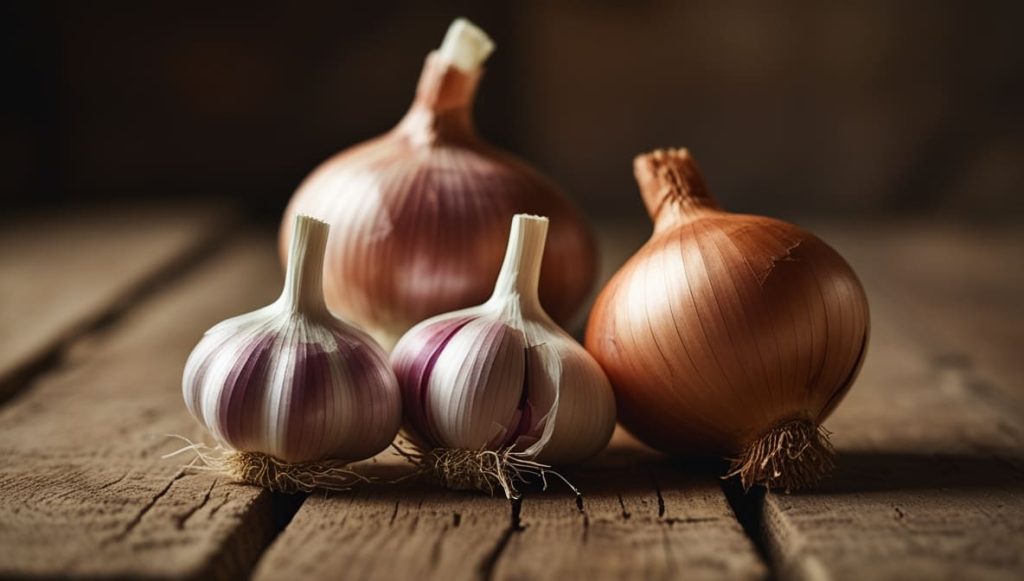
Why It’s a Staple:
These aromatics add flavor and nutrients to any dish.
How to Use It:
- Sauté as a base for soups, stews, or stir-fries.
- Roast with vegetables for added flavor.
15. Dark Chocolate (70% or Higher)

Why It’s a Staple:
Dark chocolate is rich in antioxidants and can satisfy sweet cravings in a healthy way.
How to Use It:
- Enjoy a square as a dessert.
- Melt and drizzle over fruit or yogurt.
Tips for Building a Healthy Pantry
- Plan Ahead: Stock up on these staples during your weekly grocery trip.
- Batch Cook: Prepare meals in advance using these ingredients.
- Mix and Match: Combine staples to create endless meal options.
FAQs
-
What are the best foods to stock for healthy eating?
The best foods to stock for healthy eating include nutrient-dense options such as quinoa, brown rice, oats, eggs, leafy greens, avocados, sweet potatoes, chickpeas, chicken breast, and salmon. These foods are rich in essential nutrients, fiber, and healthy fats to support a balanced diet.
-
How can I make healthy eating easier during the week?
To make healthy eating easier, plan your meals in advance and stock up on versatile ingredients like quinoa, vegetables, lean proteins, and whole grains. Meal prep can help you save time and ensure you always have nutritious options ready to go.
-
What are the healthiest sources of protein for a balanced diet?
Healthy protein sources include chicken breast, salmon, eggs, Greek yogurt, chickpeas, lentils, quinoa, and almonds. These foods provide high-quality protein along with other essential nutrients like vitamins and minerals.
-
Can I use frozen vegetables and fruits for healthy eating?
Yes! Frozen vegetables and fruits are a convenient and nutritious option. They retain most of their nutrients and are often more affordable than fresh produce. Incorporate frozen berries, spinach, and other veggies into smoothies, soups, and stir-fries.
-
How do I include more fiber in my diet?
To include more fiber in your diet, focus on foods like oats, quinoa, sweet potatoes, leafy greens, chickpeas, and lentils. These fiber-rich foods help promote digestive health, regulate blood sugar, and keep you full longer.
-
How long do these staples last?
Most pantry staples like quinoa, oats, and canned goods can last for months. Fresh items like eggs and leafy greens should be used within a week or two.
Final Thoughts: Stock Your Kitchen for Healthy Eating
Maintaining a balanced diet doesn’t have to be complicated. By stocking your kitchen with these 15 essential foods, you’re setting yourself up for a week of healthy, delicious, and nutrient-dense meals. Whether you’re meal prepping for the week or just looking for quick and easy options, these foods will keep you energized and nourished.
If you’re new to meal planning, check out our guide on meal prepping for the week to get started and make the most of these healthy staple foods. With a little planning, healthy eating can become a sustainable part of your lifestyle.



